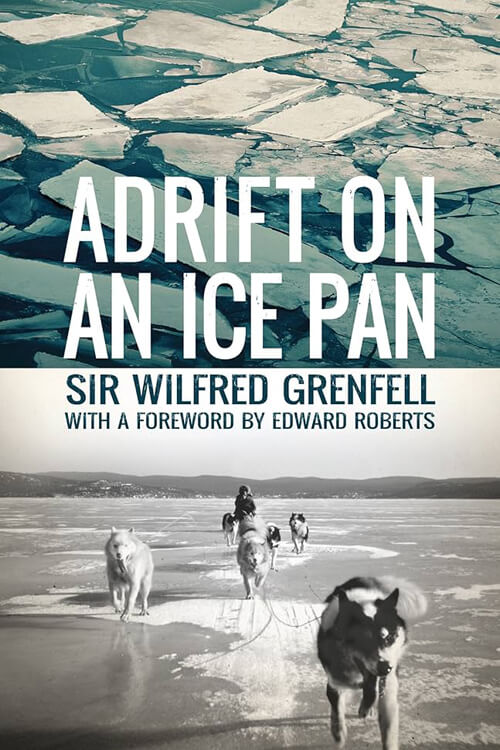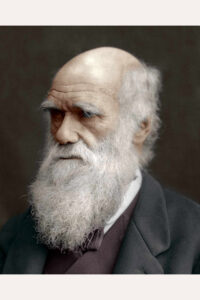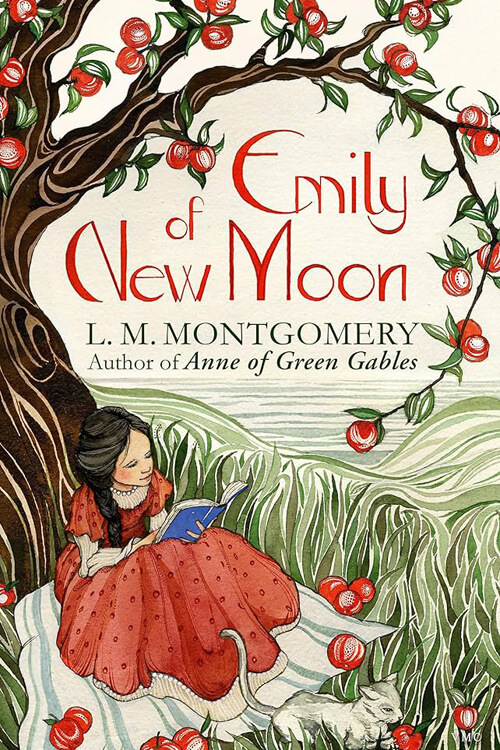
On the Origin of Species or The Preservation of Favoured Races in the Struggle for Life.
When we look at the individuals of the same variety or sub-variety of our older cultivated plants and animals, one of the first points that strikes us is that they generally differ much more from each other than the individuals of any one species or variety in a state of nature. When we reflect on the vast diversity of the plants and animals which have been cultivated and which have varied during all ages under the most different climates and treatments, I think we are driven to conclude that this more significant variability is simply due to our domestic productions having been raised under conditions of life not so uniform as, and somewhat different from, those to which the parent-species have been exposed under nature. There is also, I think, some probability, in the view propounded by Andrew Knight, that this variability may be partly connected with excess food. It seems pretty clear that organic beings must be exposed for several generations to new conditions of life to cause any appreciable amount of variation. Once the organization has begun to vary, it generally continues to vary for many generations. No case records a variable ceasing to be a variable under cultivation. Our oldest cultivated plants, such as wheat, still often yield new varieties: our oldest domesticated animals are still capable of rapid improvement or modification.
It has been disputed at what period of life the causes of variability, whatever they may be, generally act, whether during the early or late period of embryo development or at the instant of conception.
Geoffroy St. Hilaire’s experiments show that unnatural treatment of the embryo causes monstrosities, and any clear line of distinction from mere variations cannot separate monstrosities. However, I am strongly inclined to suspect that the most frequent cause of variability may be attributed to the male and female reproductive elements being affected before conception. Several reasons make me believe in this, but the chief one is the remarkable effect that confinement or cultivation has on the functions of the reproductive system; this system appears to be far more susceptible than any other part of the organization to the action of any change in the conditions of life. Nothing is more accessible than to tame an animal, and few things more complicated than to get it to breed freely under confinement, even in the many cases when the male and female unite. How many animals there are that will not breed, though living long under not very close confinement in their native country? This is generally attributed to vitiated instincts, but how many cultivated plants display the utmost vigor and yet rarely or never seed? In some such cases, it has been found that very trifling changes, such as a little more or less water at some particular period of growth, will determine whether or not the plant sets a seed. I cannot enter the copious details I have collected on this curious subject here. Still, to show how singular the laws determine the reproduction of animals under confinement, I may mention that carnivorous animals, even from the tropics, breed in this country pretty freely under confinement, except the plantigrades or bear family. In contrast, with the rarest exceptions, predatory birds hardly ever lay fertile eggs. Many exotic plants have worthless pollen, in the same condition as the most sterile hybrids.
Read or download Book
Charles Darwin
Darwin was born in Shrewsbury, Shropshire, on 12 February 1809, at his family’s home, The Mount. He was the fifth of six children of wealthy society doctor and financier Robert Darwin and Susannah Darwin (née Wedgwood).
Biography.
His grandfathers Erasmus Darwin and Josiah Wedgwood were both prominent abolitionists. Erasmus Darwin praised general concepts of evolution and common descent in his Zoonomia (1794), a poetic fantasy of gradual creation including undeveloped ideas anticipating concepts his grandson expanded. Both families were largely Unitarian, though the Wedgwoods were adopting Anglicanism. Robert Darwin, a freethinker, had baby Charles baptized in November 1809 in the Anglican St Chad’s Church, Shrewsbury, but Charles and his siblings attended the local Unitarian Church with their mother. The eight-year-old Charles already had a taste for natural history and collecting when he joined the day school run by its preacher in 1817. That July, his mother died.
From September 1818, he joined his older brother Erasmus in attending the nearby Anglican Shrewsbury School as a boarder. Darwin spent the summer of 1825 as an apprentice doctor, helping his father treat the poor of Shropshire, before going to the well-regarded University of Edinburgh Medical School with his brother Erasmus in October 1825. Darwin found lectures dull and surgery distressing, so he neglected his studies. He learned taxidermy in around 40 daily hour-long sessions from John Edmonstone, a freed black slave who had accompanied Charles Waterton in the South American rainforest. In Darwin’s second year at the university, he joined the Plinian Society, a student natural history group featuring lively debates in which radical democratic students with materialistic views challenged orthodox religious concepts of science.
He assisted Robert Edmond Grant’s investigations of the anatomy and life cycle of marine invertebrates in the Firth of Forth, and on 27 March 1827 presented at the Plinian his own discovery that black spores found in oyster shells were the eggs of a skate leech. One day, Grant praised Lamarck’s evolutionary ideas. Darwin was astonished by Grant’s audacity but had recently read similar ideas in his grandfather Erasmus’ journals.[29] Darwin was rather bored by Robert Jameson’s natural history course, which covered geology—including the debate between Neptunism and Plutonism. He learned the classification of plants and assisted with work on the collections of the University Museum, one of the largest museums in Europe at the time. Darwin’s neglect of medical studies annoyed his father, who sent him to Christ’s College, Cambridge, in January 1828, to study for a Bachelor of Arts degree as the first step towards becoming an Anglican country parson.
Darwin was unqualified for Cambridge’s Tripos exams and was required instead to join the ordinary degree course. He preferred riding and shooting to studying. During the first few months of Darwin’s enrolment at Christ’s College, his second cousin William Darwin Fox was still studying there. Fox impressed him with his butterfly collection, introducing Darwin to entomology and influencing him to pursue beetle collecting. He did this zealously and had some of his finds published in James Francis Stephens’ Illustrations of British Entomology (1829–32). Through Fox, Darwin became a close friend and follower of botany professor John Stevens Henslow. He met other leading parson-naturalists who saw scientific work as religious natural theology, becoming known to these dons as “the man who walks with Henslow”. When his own exams drew near, Darwin applied himself to his studies and was delighted by the language and logic of William Paley’s Evidences of Christianity (1795).
In his final examination in January 1831, Darwin did well, coming tenth out of 178 candidates for the ordinary degree. Darwin had to stay at Cambridge until June 1831. He studied Paley’s Natural Theology or Evidences of the Existence and Attributes of the Deity (first published in 1802), which made an argument for divine design in nature, explaining adaptation as God acting through laws of nature. He read John Herschel’s new book, Preliminary Discourse on the Study of Natural Philosophy (1831), which described the highest aim of natural philosophy as understanding such laws through inductive reasoning based on observation, and Alexander von Humboldt’s Personal Narrative of Scientific Travels in 1799–1804. Inspired by “a burning zeal” to contribute, Darwin planned to visit Tenerife with some classmates after graduation to study natural history in the tropics. In preparation, he joined Adam Sedgwick’s geology course, then on 4 August traveled with him to spend a fortnight mapping strata in Wales.






